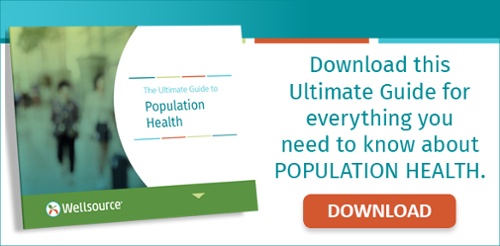
Does everybody have the emotional agility to handle stressful situations and still be happy, healthy, and productive?
Probably not. It’s a learned skill. Kind of like LeBron James of the Cleveland Cavaliers practicing for thousands and thousands of hours since he was a kid. He learned speed, quickness, and physical agility to perform better. He also learned how to keep his mind in the game and adapt to unexpected moves by the opponent.
Is your population playing with emotional agility?
“Emotional agility is an individual’s ability to experience their thoughts and emotions and events in a way that doesn’t drive them in negative ways, but instead encourages them to reveal the best of themselves,” says Dr. Susan David, a member of the Virgin Pulse* Science Advisory Board.
Everybody has thoughts, ideas, opinions, beliefs, and daily stressors. Emotional agility gives them the skills to discuss problems and concerns, find solutions, feel better, and be more productive. But when emotional agility is weak, it can have a negative impact on an individual, and a negative impact on your organization. It can even interfere with the mental focus needed to dominate a basketball game.
The impact of weak emotional agility on population health
Those day-to-day stressors and concerns get bottled up, or turn into brooding points of contention that insidiously infect your entire organization. And not just productivity and absenteeism. Chronic stress is also costly because it can:
- Raise the risk for heart attack, stroke, high blood pressure, and diabetes
- Cause digestive problems
- Weaken the immune system
- Interfere with sleep
- Contribute to depression and anxiety
- Cause muscle tension, pain, and headaches
- Trigger breathing-related problems
- Impair judgment, thinking, and brain function
- Increase the risk for self-medicating with drugs, alcohol, or food
- And lead to other chronic health problems.
So how do you help the people in your organization develop emotional agility?
1. Ask questions
The standard, “How are you doing?” probably isn’t going to provide you with a lot of useful information. But asking questions about stress and stress management in your health risk assessment can help you learn a lot about your population’s emotional agility. Start out with questions such as:
- How often do you have feelings of stress at work, stress at home, or stress about finances?
- Are you interested in improving how you cope with stress?
Take a look at the aggregate data, and you can develop specific interventions to help people stress less, feel better, and be more productive.
2. Interventions: Change one thing at a time
Most people are inherently resistant to change. So one massive intervention that deals with every possible stressor probably won’t yield great results. But by changing one thing at a time, then another, you can make a difference: For example:
- If most people are tired and stressed out at three in the afternoon, be mindful of scheduling activities at that time.
- If productivity is poor because people aren’t taking breaks, purposefully schedule a break, and go for a walk.
Other interventions to address one stressor at a time to improve emotional agility and change behaviors may include things like:
- Planning for financial wellness
- Practicing relaxation
- Improving time management
- Developing problem-solving skills
- Encouraging personal development
- Connecting participants with resources to reduce stress
- Building healthy relationships
“Getting people to stop, think, and choose is really what this is all about,” says Dr. Joe Raphael, Wellsource Director of Health and Research. “Emotional agility allows us to slow down and be more responsive than reactive.”
3. Keep improving
Even though you’ve addressed emotional agility with an intervention that doesn’t mean your population won’t experience those stressors again. Developing emotional agility is a lot like following a healthy diet or getting regular exercise. It’s a process.
Checking in with your population with a health risk assessment at least once a year is one way you can measure progress, adjust interventions, and keep improving.
When you implement population health strategies that help the people in your organization manage stress in healthy ways, change behaviors, and improve emotional agility, they’ll have the skills to maneuver, change direction, and make healthier lifestyle choices, even against a 6-foot-8, 250-pound problem.
Is workplace stress taking a toll on your employee wellness? Find out here.
*Virgin Pulse is a Wellsource client and offers the Wellsuite IV Health Risk Assessment as a part of its wellness platform.








